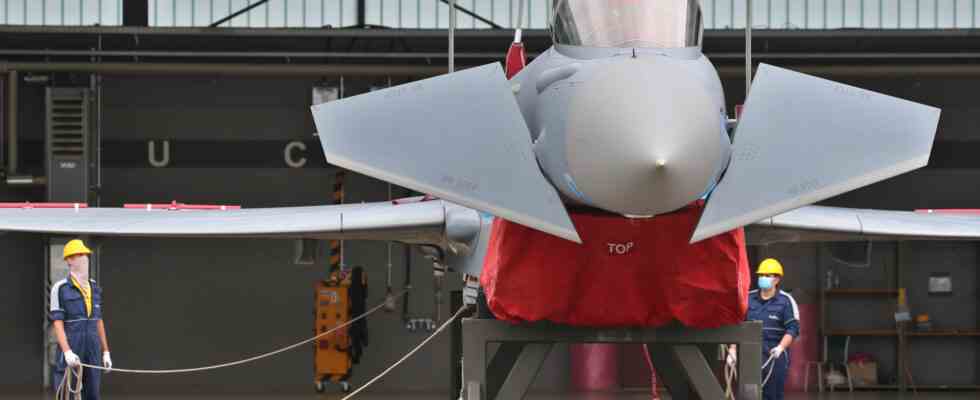FAQ
Status: 11/18/2022 3:19 p.m
For years, the development of the FCAS air defense system did not progress. Now things seem to be moving in Europe’s largest armaments project. What should FCAS bring? And where are the problems?
For a long time there was a problem with the cooperation for the European air defense system FCAS. Now an important step is apparently imminent: The project could soon move into phase 1B, i.e. the pre-development of prototypes. The federal government is hoping for a speedy agreement on the next step. Why is? And how does it continue?
What is FCAS?
The so-called Future Combat Air System, or FCAS for short, is intended to be the future of the Air Force. It is Europe’s largest armaments project and is intended to at least partially replace previous combat aircraft such as the Eurofighter from 2040. Not just an aircraft is planned, but a networked system of manned combat aircraft and unmanned drones that work together for combat and reconnaissance.
In addition to Germany, Spain and France are involved in the implementation, which is in charge of development. The multi-billion project FCAS was initiated in 2017 by the then Chancellor Angela Merkel and the French President Emmanuel Macron. It was the common Franco-German wish that the two competing armaments companies Airbus and Dassault Aviation work together. But that is proving difficult and has repeatedly delayed the FCAS project.
Where are the problems?
So far, Airbus and Dassault Aviation have been building the Eurofighter and Rafale fighter jets themselves, but the politicians want them to work closely together on FCAS. Dassault is to build the heart of the Future Combat Air System, the so-called “Next Generation Fighter”. Airbus is said to be responsible for AI-supported drone swarms and a “combat cloud” for data exchange within the air combat system. That sounds like a clear division of tasks, but the devil is in the details.
Because two armaments companies with different cultures meet, which are supposed to share intellectual know-how in the future. While Airbus is traditionally a transnational company with a strong state stake, Dassault and its suppliers are primarily a main producer for the French army.
So far, Dassault had insisted on the property rights to the fighter jet to be developed, the “Next Generation Fighter”. This means that for a long time the French were not willing to share their technical knowledge with Airbus or with the German Bundeswehr. This sparked a month-long dispute that upset the original schedule. In the meantime, however, the Federal Ministry of Defense is certain that the problems with intellectual property have been resolved, even with political pressure. The prototype for the “New Generation Fighter” should now be ready in 2028, with a two-year delay.
Who pays for FCAS?
Even though Spain has been involved in the FCAS project since 2019, Germany and France have the key roles. Good cooperation at the political level would therefore be all the more important, but this is where things got stuck in the end. Also because there are strategic and cultural differences. While Germany relied on European cooperation for earlier armaments projects such as the Tornado and Eurofighter, France often opted for its own national development approaches. Accordingly, the armaments industry is also closely linked to the state. But France cannot and does not want to finance the complex Future Combat Air System alone. Because the original cost estimates already amount to 100 billion euros, but experience has shown that it is likely to be more expensive.
With the transition from project phase 1A to 1B, the costs increase. In the German defense budget alone, almost 480 million euros are planned for the coming year. However, they have not yet been approved by Parliament. That could change after the basic agreement.
And even if the development of FCAS starts now, that is not yet a final decision as to whether the “New Generation Fighter” will actually be built and purchased by the Bundeswehr. Because earlier armaments projects have swallowed up billions and were ultimately scrapped anyway.

